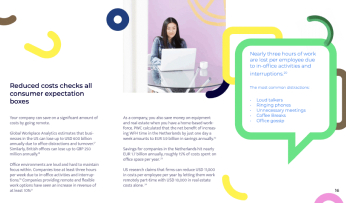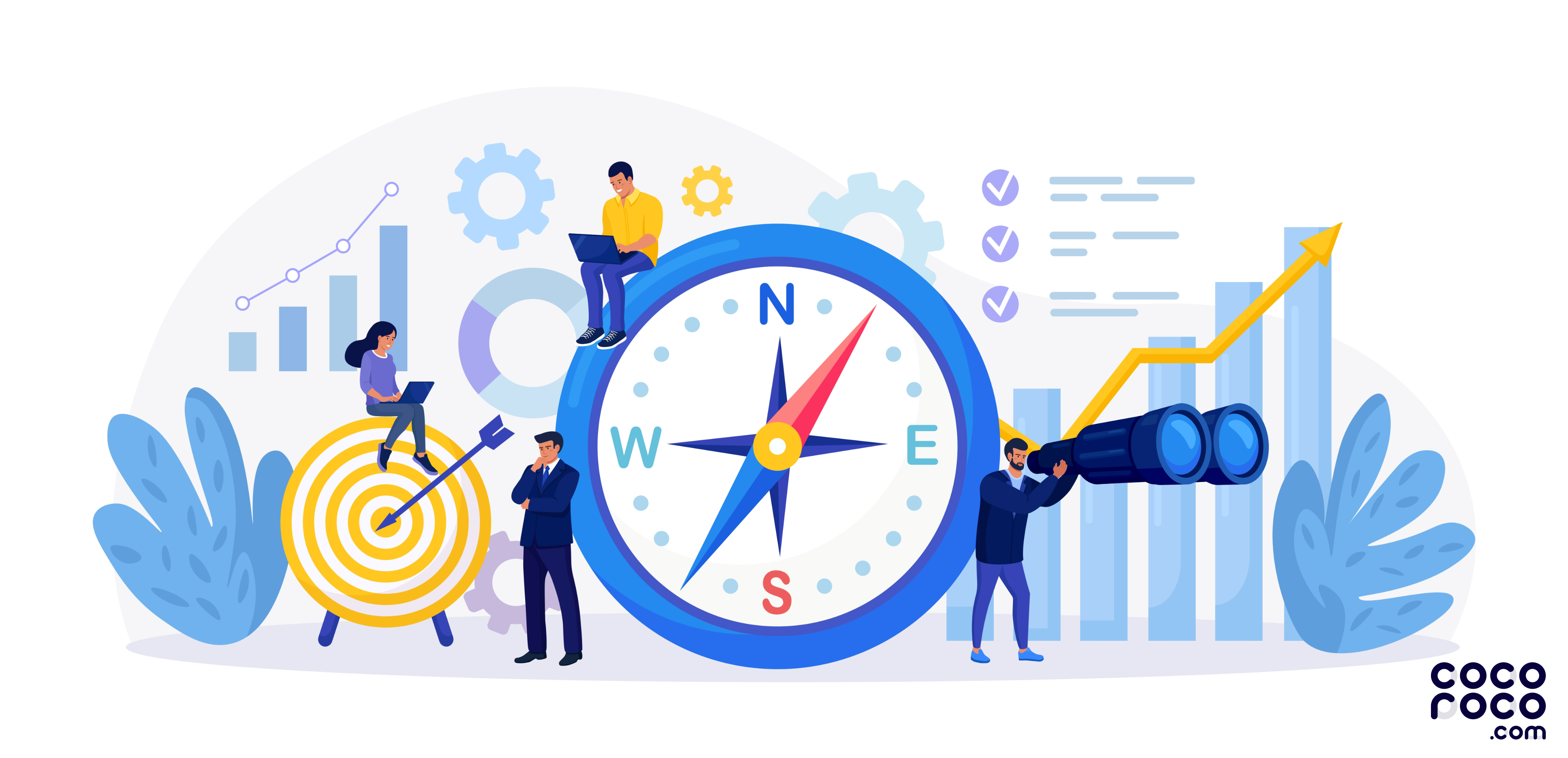Every business needs to know how its products and services are being received in the market. A good indicator is the number of satisfied customers your business generates. However, customer satisfaction (CSAT) itself is an abstract concept. So how do you measure it? That’s where satisfaction surveys come in.
A CSAT score calculator can show you where your customer support efforts are paying off and where you need improvement in your customer journey.
CSAT score calculators convert satisfaction into a numerical value derived from a survey, letting you track and monitor your product and service initiatives in real time. These handy little tools are a must-have for business growth and success today.
But how do you use a CSAT score calculator? First, let’s look at how to calculate CSAT scores in a quick and simple way.
How to calculate CSAT scores
How to calculate CSAT scores is pretty straightforward. Customers receive an automated survey at the end of a service interaction, requesting them to rate your product or service experience from low to high. Sample survey questions include “How satisfied are you with the service offered?’ or “How likely are you to purchase with us again?”
Using the Likert measurement scale, the CSAT score calculator computes customer ratings on a linear progression scale of one to five. A rating of one is the lowest, while five is the highest. Collective scores are then measured using different CSAT score formulas for a specified duration of time or within a particular group of respondents.
CSAT score formulas meet different business objectives. So let’s examine them further by looking at how to use CSAT score calculators in more detail.
How to use a CSAT score calculator
There are several ways of measuring CSAT. You can deploy different methods based on customer data you want to collect, assess, or share to improve your product or service. Here are three of the most common CSAT score formulas and their uses.
The binary CSAT score formula

CSAT score calculators often use a binary method for measuring customer satisfaction. This method is for specific interactions requiring simple yes/no, true/false, good/bad type answers.
A binary CSAT score formula calculates an average percentage by dividing the number of positive replies (P) by the total number of responses (T) and multiplying this number by 100:
P/T x 100.
For example, 30 customers receive a survey to rate their experience as Unhappy or Happy: 👍🏼👎🏼
Only 20 customers took the survey, of which 15 rated their experience as 👍🏼. Therefore, the CSAT score for this survey is 75%
15/20 x 100 = 75%.
The percentage-based CSAT score formula

At other times, you might want a more nuanced measurement of customer satisfaction. In this case, a CSAT score formula with a percentage scale comes in handy.
This kind of scale allows customers to rate their satisfaction level from one to five: ☹️🙁😐🙂😀
The unhappiest face has a score of one, representing the lowest level of satisfaction, and the happiest at five is the most.
The CSAT score calculator adds the total scores received (S), divides it by the maximum score possible (M) and multiplies this by 100 to give you the percentage score:
S/M x 100
For example, three customers complete the survey. The first customer rates their experience as ☹️, the second 😐, and the last 😀. The CSAT score for this survey would be 60%
(1+3+5) / (3×5) x 100 = 60%
The star rating CSAT score formula

CSAT score calculators using the star rating system lets customers rate services or products using a scale of five stars: ⭐⭐⭐⭐⭐ Five stars is the highest rating a customer can give you, and one star is the lowest.
The calculation is similar to the percentage scale, except instead of multiplying by 100, the multiplier is 5, as the highest star rating is 5:
S/M x 5
As an example let’s use the same survey sample as the percentage score above. Three customers take the survey and rate you at ⭐, ⭐⭐⭐, and ⭐⭐⭐⭐⭐. Your CSAT star rating for this survey would be three-out-of-five stars.
(1+3+5) / (3×5) x 5 = 3
AI-based CSAT score formula

After deploying any of the methods above to gather customer satisfaction data, you can also provide customers with a text-box option to answer open-ended questions. Like “Tell us more about your rating.”
Open-ended questions let them explain in more detail why they’re happy or unhappy with your business, which in turn helps you understand customer expectations better.
Data of this kind helps you meet customer needs more effectively than a lone CSAT score, as a number can’t explain the whys of customer happiness or disappointment. Feedback can.
You can then mine free-form data from survey responses and use AI-based sentiment analysis to measure customer satisfaction qualitatively, for instance, by assigning values to specific keywords, opinions, or trends.
These quality-driven statistics are key drivers for further improvement and innovation drives.
What is a good CSAT score
For percentage-based CSAT calculation, an 80% average is considered the gold standard across industries worldwide.
For star ratings, a recent McKinsey survey found product listings with three- or four-star ratings enjoyed three times higher sales than those with one-star ratings, while 95% of sales across all categories were for products with 3.5 or more stars.
The American Customer Satisfaction Index (ACSI) and the Extended Performance Satisfaction Index may be referred to for further guidance to narrow down other touchpoints and benchmark scores for specific businesses.
Why you need a CSAT score calculator

Monitoring CSAT is necessary for customer retention and business growth. It helps you know your customer better, identify pain points, drive improvement across various verticals, adapt a strategy based on timely feedback, and increase sales.
Segmented CSAT tracking helps you identify where you need improvement in your internal and external offerings. You can measure CSAT rates within parameters like individual agent performance, customer groups, or support team metrics. Segmented CSAT tracking also lets you plan and implement the necessary adaptations you need to improve performance.
CSAT score calculators also help you deliver better customer experiences. You can avoid losing customers by being able to respond promptly to unhappy ones who’ve rated you poorly.
Using the CSAT score formula relevant to your business lets you know your customer better. By identifying their pain points, you’re in a stronger position to introduce changes that keep them happy.
And boosting customer experience by increasing customer satisfaction is crucial. According to Harvard Business Review, better customer experience (CX) increases your sales as happy customers spend more money — sometimes by as much as 140%.
How CSAT score calculators help you improve and grow

A CSAT score calculator is the easiest way to track customer satisfaction in real-time to improve your products and services. Generally, CSAT surveys invite a high response rate due to their simplicity of use. You can then use the CSAT scores you collect in these ways:
Track growth over time
You can review your organisational growth through internal benchmarking by graphing collected CSAT scores over long-term growth.
Evaluate internal training and quality
CSAT scores let you know whether internal quality assessments of your customer service department are matched by how customers view your support effort.
Identify customer health and route handling
By categorising customers as happy, unhappy or at risk of churn, you can act on improving customer health by routing them to specialised agents and increasing service efforts accordingly.
Prevent churn by acting on negative feedback
Retaining customers is the most critical thing your service team should focus on, as a lost customer is lost business, likely forever. Quick action on poor CSAT scores helps prevent this.
Promoting happy customers
Satisfied customers can be targeted with active marketing offers and loyalty rewards while unhappy ones can be converted to happy ones with attractive discounts and goodwill freebies.
Cons of CSAT score calculators

CSAT scores are best understood in moderation and within context. As a result, there are a few downsides to relying too heavily upon them. Here’s why:
Faulty samples result in skewed scores
Lost customers aren’t a part of your survey results, though their feedback and ratings still matter. Limited group surveys—or failing to account for the customers who didn’t respond—can also make for an inadequate survey sample and less-than-ideal results.
Big responses don’t mean accurate data
Sometimes, scoring can also be a result of a surge in responses. This is usually the case due to some unexpected factor, for example, a flood of complaints due to a technical issue or a newly introduced feature.
Scores can be too binary
Without customer feedback, a simple percentage or number cannot explain why customers are happy or unhappy with their experience.
Survey annoyance limits sample size
Sending CSAT surveys after every interaction can irritate or exhaust your customers, who won’t respond to future surveys, thus robbing you of timely and impactful feedback.
Satisfaction won’t equal customer loyalty
Despite receiving a high CSAT score, the customer may choose not to repurchase with you, as even a satisfied customer can leave for a better deal elsewhere.
Scores can’t be compared with the competition
Due to how surveys are worded, received, and calculated, CSATs benchmarks may differ from business to business, so you don’t really know how you’re doing against your competitors.
CSAT versus NPS and CES

Though many industries rely on net promoter scores (NPS) and customer effort scores (CES), these two alone aren’t enough to understand customer satisfaction.
NPS measures how likely a customer is to recommend you to another business, while CES tells you how easy or difficult a survey interaction was for a customer.
But only CSAT scores reveal how customers feel about your product or service. It’s the closest you’ll come to knowing how many satisfied customers you have — and how many you might lose.
How to improve your service with a CSAT score calculator
You can boost your CSAT scores by improving your service culture. Think about rewriting your mission statement to reflect the customer service you wish to deliver. With the right motivation, your service team has the direction they need to keep customers happy.
And you have to show customers you care.
Ask nuanced questions to understand customer dissatisfaction better. Review the feedback you get and plan improvements based on quality data. Plug the gaps in your service offerings.
Finally, look for ways to create emotional connections with customers and sustain them.
The Cocoroco Solution

Ready to drive your customer satisfaction effort to its full potential? Why not consider going remote with your customer service?
At Cocoroco, we believe the future of great customer service is virtual support. Going remote allows you to access the world’s best talent. Geography, language, and time-zones are no longer barriers to high-quality service.
Our platform lets you recruit pre-vetted, qualified, language-specialist agents at the touch of a button. We look after the messy paperwork from compliant hiring to payrolling while you reap the benefits of expert support for customers worldwide.
Interested in knowing more? Get in touch with us to book a free demo to see how our platform can help you improve your customer satisfaction.










